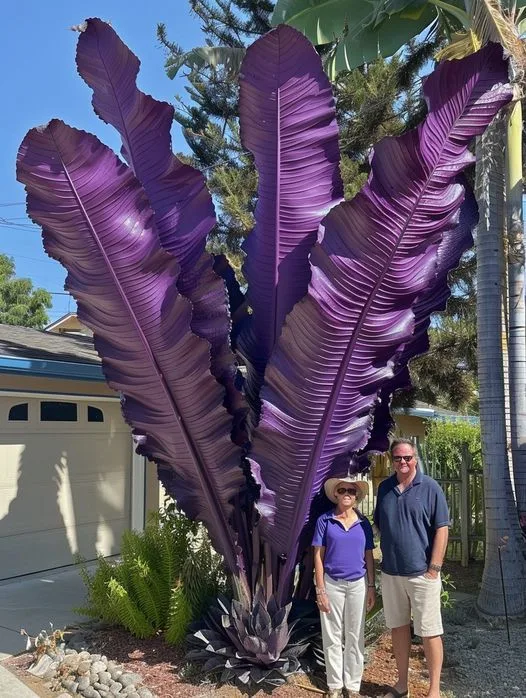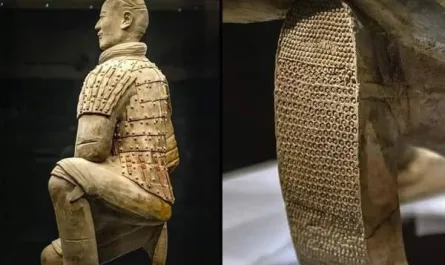Welcome to my botanical corner of the internet! If you’re a fan of unique, otherworldly plants that can turn your garden into a scene from a sci-fi movie, then the Sapphire Tower (Puya alpestris) is about to become your new obsession. Native to the rugged Andean mountains of Chile, this bromeliad is famous for its stunning metallic turquoise flowers that erupt from towering spikes, creating a spectacle that’s as rare as it is breathtaking. In this detailed blog post, we’ll dive deep into everything you need to know about this plant—from its fascinating biology and habitat to practical care tips, propagation methods, and even some quirky facts. Whether you’re a seasoned succulent enthusiast or a newbie looking to add some drama to your xeriscape, I’ve got you covered. Let’s get started!

What Makes the Sapphire Tower So Special?
Imagine a plant that looks like it was plucked straight from an alien landscape: spiky rosettes of silvery-green leaves, armed with sharp hooks that deter herbivores, and then—after years of patient growth—a massive flower spike shooting up to 6 feet tall, adorned with vibrant turquoise blooms that shimmer like polished gems. That’s the Sapphire Tower in a nutshell. Scientifically known as Puya alpestris, it’s part of the Bromeliaceae family, which includes more familiar plants like pineapples and air plants. But unlike its tropical cousins, this one hails from high-altitude, arid environments in Chile’s Andes, where it thrives in rocky, well-drained soils at elevations up to 6,500 feet.
The flowers are the real showstopper. Each bloom is a brilliant metallic blue-green, often described as “turquoise,” and they produce nectar that attracts pollinators like hummingbirds and bees. Interestingly, the plant is monocarpic, meaning each rosette dies after flowering—but not before producing offsets (pups) to continue the legacy. Blooms can take anywhere from 5 to 10 years (or even longer in cultivation) to appear, making the event a rare treat. In fact, one botanical garden reported a Sapphire Tower blooming for the first time in a decade, drawing crowds of admirers. The inflorescence can last for months, and the plant’s overall height during bloom can reach up to 10 feet, making it a true garden focal point.
Fun fact: The name “Puya” comes from the Mapuche word for “point,” referring to the sharp leaf tips, while “alpestris” means “of the high mountains.” These spines aren’t just for show—they hook onto animals, sometimes fatally, which has earned some Puya species the nickname “sheep killers” in their native range. Thankfully, P. alpestris is a bit milder, but handle with care!
Ideal Growing Conditions: Mimicking the Andes at Home
Cultivating Sapphire Tower outside its native Chile can be challenging, but it’s rewarding for those who nail the conditions. This plant is perfect for xeriscaping—landscapes designed to conserve water—thanks to its drought tolerance and low-maintenance vibe. Here’s a breakdown of its key care needs:
Light Requirements
Full sun is non-negotiable for healthy growth and those iconic blooms. Aim for at least 6-8 hours of direct sunlight daily. In hotter climates, some afternoon shade can prevent leaf scorch, but too much shade will lead to leggy growth and delayed flowering. If growing indoors or in a greenhouse, supplement with grow lights during shorter winter days.
Watering Wisely
As a drought-adapted plant, Sapphire Tower hates soggy roots. Water sparingly, allowing the soil to dry out completely between sessions—think every 2-3 weeks in summer, and even less in winter. Deep but infrequent watering mimics its natural rainfall patterns in the Andes. Overwatering is the biggest killer, often leading to root rot. If you’re in a humid area, err on the side of underwatering.
Soil and Potting Mix
Well-drained, gravelly soil is essential. Use a cactus or succulent mix amended with perlite, pumice, or sand to ensure excellent drainage. In garden beds, plant on slopes or raised mounds to prevent water pooling. pH should be slightly acidic to neutral (6.0-7.0). Avoid rich, organic soils that retain moisture.
Temperature and Humidity
This high-altitude native prefers cool to moderate temperatures: 55-75°F (13-24°C) during the day, with nights dipping lower. It’s hardy to about 20°F (-7°C) but protect from hard frosts by bringing potted plants indoors or using frost cloth. Humidity should be low to moderate; high humidity can invite fungal issues, so good air circulation is key.
Fertilizing for Success
Feed lightly during the growing season (spring through summer) with a balanced cactus or succulent fertilizer, diluted to half strength. Apply every 4-6 weeks, but skip in winter when the plant is dormant. Over-fertilizing can cause soft growth prone to pests. Some growers use a slow-release formula placed a few inches from the base for convenience.
Pest and Disease Management
Sapphire Tower is relatively pest-resistant, thanks to its tough leaves. Watch for mealybugs or scale insects, which can be treated with insecticidal soap. Root rot from overwatering is the main disease threat—prevention through proper drainage is better than cure.
Propagation: Patience Pays Off
Propagating Sapphire Tower is straightforward but requires time, as the plant grows slowly. The two main methods are offsets and seeds.
From Offsets (Pups)
This is the easiest and most reliable way, ensuring clones identical to the parent. After the mother rosette flowers and begins to die, gently separate the pups that form at the base. Use a sharp, sterile knife and let the cuts callus for a day before planting in well-drained mix. Keep moist (but not wet) until roots establish, which can take a few months. Division preserves the plant’s traits and is ideal for beginners.
From Seeds
For the adventurous, seed propagation offers variety. Collect ripe seed capsules after blooming, or buy from reputable sources. Sow in a sterile, well-draining mix, keeping it moist and warm (70-75°F or 21-24°C) under bright, indirect light. Germination can take 2-4 weeks, but seedlings grow slowly—expect 3-5 years before they’re sizable. One grower shared on Reddit that their seeds sprouted well in a potting soil-perlite mix, thriving after three years.
Pro tip: Sow seeds as soon as they’re ripe for best viability, and be patient—these aren’t fast growers!
Incorporating Sapphire Tower into Your Garden
This plant shines in rock gardens, succulent borders, or as a standalone specimen in xeriscapes. Pair it with other drought-tolerant beauties like agaves, yuccas, or echeverias for a desert-inspired look. In containers, it’s great for patios or balconies, where you can control the soil and move it indoors during cold snaps. Its architectural form adds vertical interest, and the turquoise blooms provide a pop of color that’s unmatched.
In its native habitat, it plays a role in ecosystems by providing nectar for pollinators and even trapping small animals for nutrients (though less aggressively than some relatives). In your garden, it attracts hummingbirds and adds biodiversity.
Challenges and Tips for Success
Growing Sapphire Tower isn’t without hurdles. Its slow pace can test patience, and in cooler climates, it may never bloom without supplemental heat. Outside Chile, well-draining soil is crucial to replicate the rocky Andes. If you’re in a wet region, grow in pots to control moisture. And remember those spines—wear gloves when handling!
For best results, source plants from nurseries specializing in rare succulents. Once established, it’s low-maintenance and can live for decades, with blooms every 5-10 years.
Final Thoughts: A Gem Worth the Wait
The Sapphire Tower is more than just a plant; it’s a conversation starter, a pollinator magnet, and a testament to nature’s weird and wonderful designs. With the right care—full sun, minimal water, and gritty soil—you can bring a slice of the Chilean Andes to your backyard. If you’re up for the challenge, the reward of those metallic turquoise spikes is incomparable. Have you grown Puya alpestris? Share your experiences in the comments below—I’d love to hear your stories!
Happy gardening, and may your Sapphire Tower bloom brilliantly!
Note: This post is based on general horticultural advice as of August 2025. Always check local conditions and consult experts for personalized tips.





